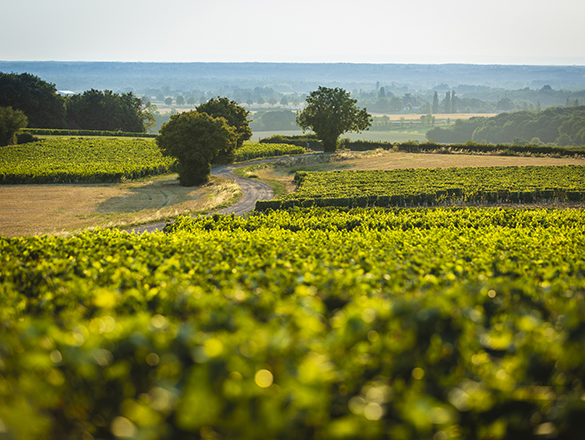
The vineyards of Bourgogne produce some great wines with a historical and international reputation. However, the region is not simply limited to its iconic appellations. In addition to its Village Premier Cru and Grand Cru AOCs, it also produces a range of wonderful Régionale and Village appellations to explore.
You will also find a full list of the Bourgogne’s Climats and lieux-dits on this page.
Check out the complete list of the 84 Bourgogne appellations.
However, your exploration has only just begun. Bourgogne wines have never before offered such high quality. Besides our range of internationally celebrated wines, try some of our lesser-known appellations where there are lots of surprises in store.
And for a fun way to find out more about the wines on offer, try out our “Which Bourgogne wine is right for me?” quiz, or check out Bourgogne Maps to take an interactive tour of the region.
Regional Appellation
VIGNOBLE DU MÂCONNAIS
31 juillet 1937
Whites - Chardonnay.
Reds and rosés - Gamay.
Production area:
Whites: 14.03 ha
Reds and rosés: 10.73 ha
Annual harvest:
Whites: 90,232 bottles
Reds and rosés: 58,337 bottles
Source: 5-year average, 2017-2021
An additional geographical denomination that is part of the Régionale Mâcon appellation in the Mâconnais. According to the 2005 specifications rules, the name Mâcon-Mancey refers to white, red, and rosé wines grown within a defined area in the villages of Boyer, La-Chapelle-sous-Brancion, Etrigny, Jugy, Laives, Mancey, Montceaux-Ragny, Nanton, Royer, Sennecey-le-Grand, Vers, and Tournus.

The whites are a lovely light gold color with hints of silver. They have a very expressive nose with fresh fruit like apricot, apple, quince, along with blossom like mock orange, sometimes with a touch of rose. In the mouth, Mâcon-Mancey whites demonstrate a balanced maturity, accompanied by a rigorous, forthright finish.
In around 1925, Albert Thibaudet, a literary critic from Tournus, noted that the transition between the worlds of Pinot Noir and Gamay occurred in the shadow of the abbatial church of Saint-Philibert. Faithful to this tradition, Mâcon-Mancey reds are an intense, deep garnet color, promising good body. At first, the nose is complex, giving way to aromas of chives, peony, and fruit preserved in eau-de-vie. In the mouth, they are fleshy, but with a crispness on the length.

White: for a perfect flavor combination given the liveliness of this wine on the tongue, opt for an appetizer like a creamy leek tart or risotto verrine.
Then allow its acidulated structure to cut through the parsley butter of razor fish à la plancha, baked oysters, or snails with butter and garlic.
Serving temperatures: 10-11°C as an aperitif, 11-12°C with food.
Red: try serving this red slightly chilled at a chic brunch, with a traditional mâchon bourguignon selection of local cold cuts, cheeses, and fruit tarts.
Its spicy nose and fleshy structure will perfectly suit a bacon-filled brioche with some salad from the garden. It will also make a great match with a summer-fruit salad of gooseberries, redcurrants, blackcurrants, and raspberries, served with sponge fingers.
Serving temperature: 12-14°C.

Between the hills of the Grosne valley to the west and the more eastern of the Mâconnais hills overlooking the valley of the Saône in Tournus, the vines of Mâcon-Mancey are located to the north, at the edge of the Chalon plain.
The land around Tournus has been densely populated since Neolithic times. Its proximity to the Saône, an axis of civilization, and to the Abbey of Saint-Philibert, a place of exchange, were key factors in its agricultural development.
This prosperity, mainly related to red wines, was brutally halted in the 19th century. After the Beaujolais region, the phylloxera insect then moved into the Mâconnais, attacking vines in Mancey in June 1875. It was this village that organized the fight back and then the reconstruction of the vineyard.

From the valley of the Grison to the west, to the foothills around Tournus to the east, the vines are planted at altitudes varying from 250 to 320 meters above sea level.
To the north of the longest range in the Mâconnais, the vines between Royer and Mancey make up the heart of the appellation. The east- and west-facing slopes offer alternating beds of limestone and clay from the Middle and Upper Jurassic, often rich in iron and ideal for growing the Gamay grape - The Chardonnay grape is mainly found on Kimmeridgean limestone dating back 146 million years, and crinoidal limestone.
